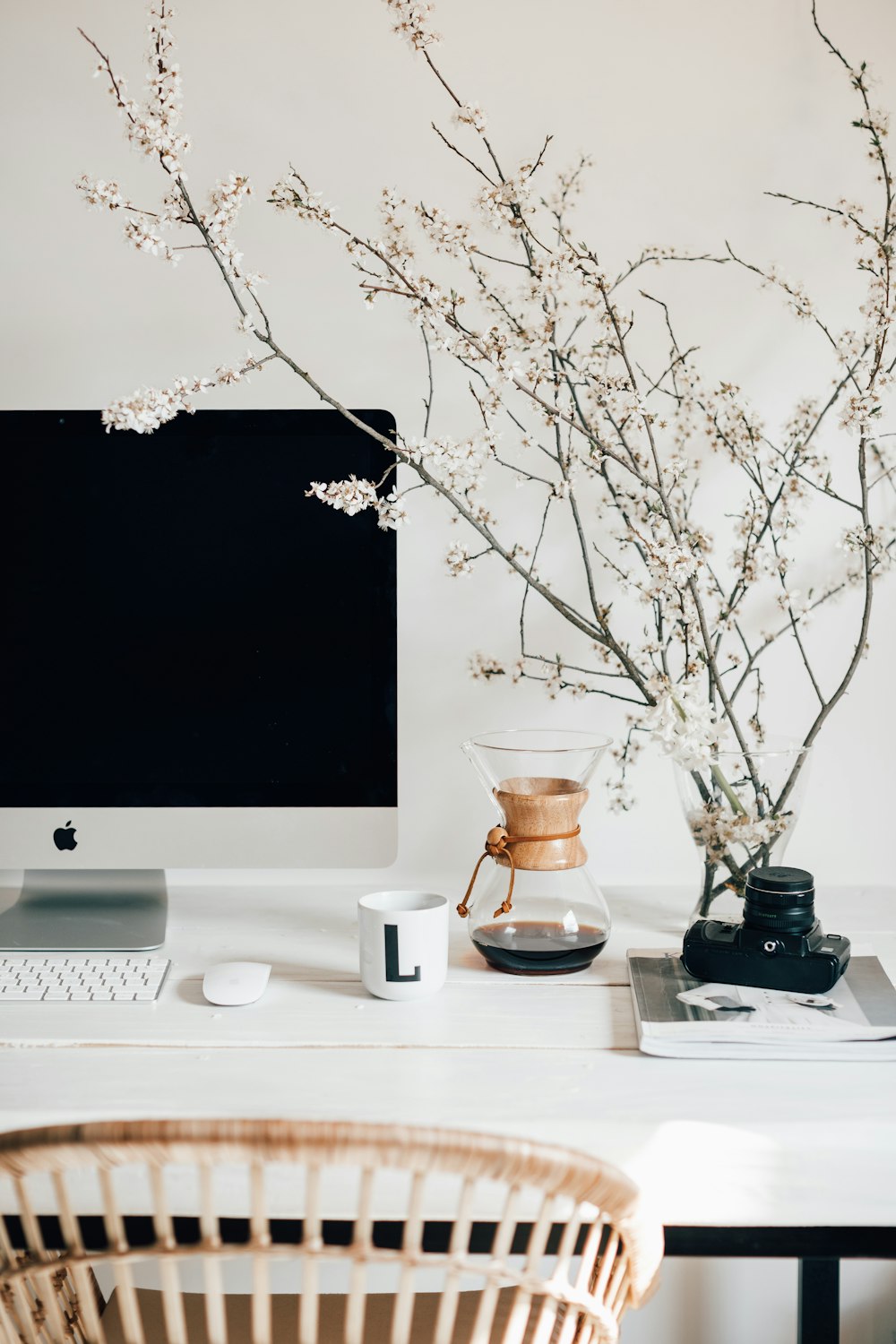
When you’re creating an office for the home, you need to make sure that your priorities are right. Not only do you want a space that’s stylish, and that allows you to stay organised, productive, and free from distraction, but you should also mind your health, at the same time. There are health issues that can develop from working a sedentary job, but there are also ways that you can mitigate those risks. Here, we’re going to look at the tips that can help you stay safe, healthy, and comfortable when working from home.
Mind where your monitors are
If most of your work at home involves looking at computer monitors, then you should make sure that you’re doing it right. You want to avoid having to tilt your head up to look at the monitor, just as you want to avoid having to tuck your chin down to see it. Both of these can lead to neck and shoulder pain. You want to keep your monitors about an arm’s length away, and positions so that the top of the screens are roughly at eye level with you. If you have two monitors, try not to keep them too far apart. If they’re beside each other, even angled towards one another slightly, you have to do a lot less head-turning to use them effectively.
Make sure you get more light than your screen
You might not think of it this way, but when you’re working at a computer screen, you are staring directly at a light source. If you have begun to experience eye strain, tiredness, or dry eyes, not only should you make sure that you have eye drops at the ready on your desk at all times, but you should also look into improving your lighting situation. Allowing natural light into the room is the best way to ensure that you’re not just looking at one source of light against a backdrop of darkness. If you work nights or turn away from the window, then consider getting yourself a desk lap from places like The Lighting Outlet to add some accompanying light around your screen, so your eyes strain less to be able to look at it.
Be mindful of blue light at night
The specific kind of light that comes from your computer is worth noting, as well. This blue light might not pose any particular danger for your eyes during the day but, if you’re working nights, then it can do a lot to keep your mind more active. This might be okay for finishing up your work, but you likely don’t want to be lying in bed awake after the fact, as well. There are apps that can adjust your monitor lights, dimming the blue light style so that you can look at your screen more comfortably and ease into a restful evening, too.
There’s nothing quite like a good chair
As mentioned, ergonomics is, in part, about ensuring that you’re not putting too much pressure in the wrong places while you’re sitting and working. One of the single best ways to do that is to get a good working chair. A solid office chair will make sure that your arms get the support they need, it will provide lumber support for your lower back, as well as a cushion for the back of the head that helps you keep it up straight. What’s more, it should be adjustable, so that you’re able to sit at the appropriate height for your legs and your desk setup, and also so that you can angle it to offer more support when you need it.
Get yourself a good desk
Just as getting the right office chair can do wonders for your body, so, too, can getting the right desk. First of all, you want to ensure that your desk is of a good height so that, when you have your monitors set up, you’re at a level with them, as described. What’s more, you can look at standing desks or adjustable desks as shown at sites like Deskup. Sitting all day, even with good posture, can put additional pressure on your lower back. While standing can alleviate that pain, being able to adjust between sitting and standing is the best option.
Take breaks when you need to
It’s very easy when you’re working at home, to totally zone in on your work, to spend hours sitting in front of your desk without moving, to get everything done as effectively and quickly as possible. However, if you end up sitting there all day, then you are having trouble with your back, knees, and legs. What’s more, even your muscles will get achy from sitting all day. Take the time to have a break for a couple of minutes every 30 minutes or an hour. Stretch your legs, get up walk around, and make sure that you’re drinking enough water. All of the problems mentioned above can be heavily exacerbated by dehydration.
Keep your workspace clean
If you’re not sharing an office space with other people, then you don’t have to worry quite as much about people bringing in colds, the flu, and bugs to get you sick. However, that doesn’t mean that hygiene isn’t still important. Bacteria can still thrive on work surfaces, especially if they don’t get cleaned as often, and dust and other allergens can build up to really affect your air quality. Make it a habit to clean up your desk, dusting and wiping it down, every single day if possible. Whether you do it before the work day starts or as it ends, it’s just a little upkeep to make sure that the space stays healthy.
With the tips above, you can make sure that you’re taking care of yourself while still getting your work done. Being in good health is just as important for your work productivity as it is for the rest of your life, so don’t think there’s anything smart about sacrificing your health for your work.

